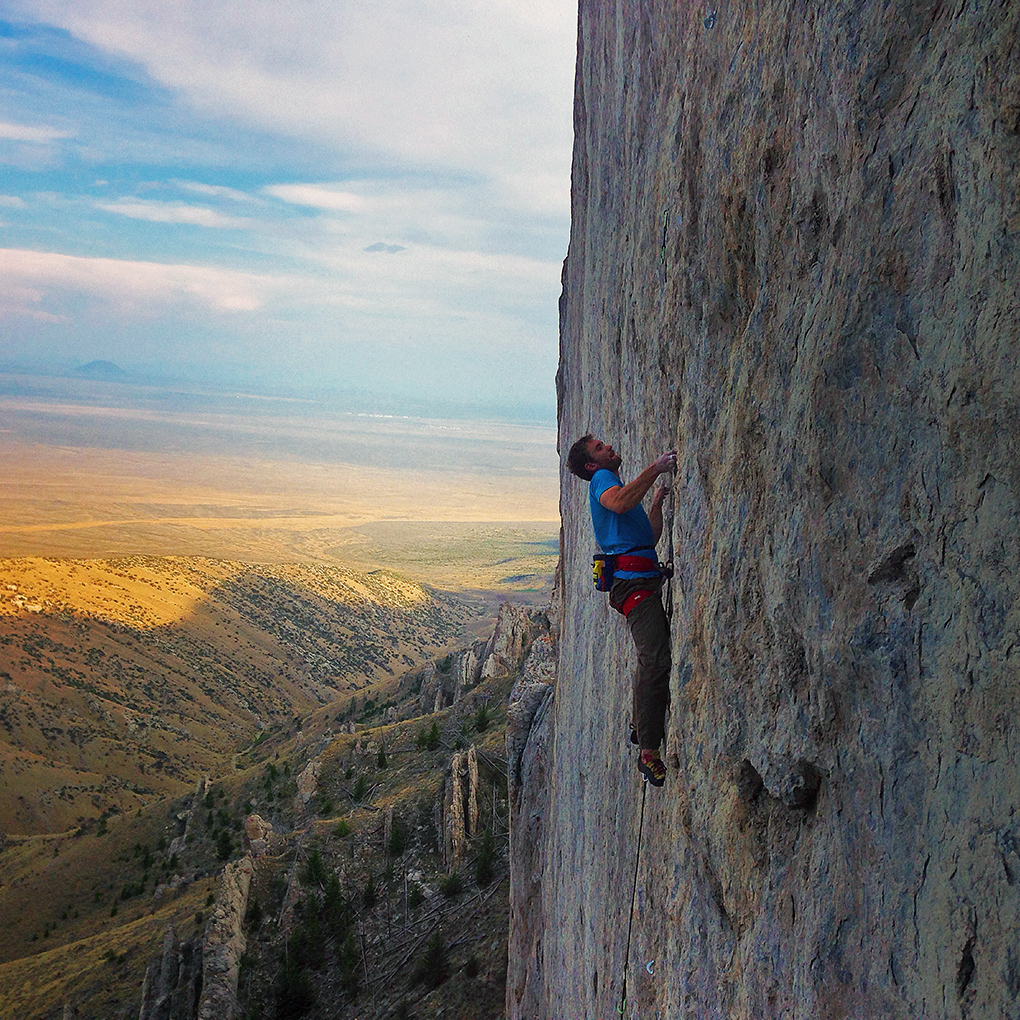Rubber / Durability
The Testarossa’s sole is made from 4mm of Vibram XS Grip2 rubber. La Sportiva claims that this is “the hardest and stickiest climbing rubber on the market,” and that it’s durable without sacrificing performance.
I haven’t noticed the XS Grip2 rubber to be noticeably stickier than the Stealth HF used in many Five Ten shoes or the TRAX rubber used by Evolv. What I have found is that it’s extremely durable while still being quite sensitive.
In my review of the Evolv Shaman, I noted that the Shaman had a 4.2mm thick sole that made for an extremely durable—but not very sensitive—shoe. The 4mm XS Grip2 sole of the Testarossa, on the other hand, has withstood months of use on sharp limestone and highly technical granite, and it’s considerably more sensitive than the Shaman.
Cons
I have only a few minor complaints with the Testarossa.
As with all lace-ups where the lacing system extends down the full length of the shoe, the Testarossa does not excel on toe hooks; if a toe hook is required, I usually use either the Five Ten Team or the Solution instead. But since I use the Testarossa mostly for sport climbing and don’t usually come across routes that require technical toe hooks, this isn’t really an issue for me.
Then there’s the toe box. As I’ve said, the Testarossa has a fairly wide toe box, and I have fairly narrow feet. Hence, this shoe doesn’t fit my foot quite as well as a shoe with a narrower toe box and last. The result is that the Testarossa can feel a bit boxy. But this is really only an issue for me when I’m bouldering, and if you have wide feet, you’ll likely appreciate the roomier toe box. And again, the wider toe box means the shoe is more comfortable for sport climbing.
Finally, while the Testarossa’s heel fits my foot well and performs well on straightforward hooks, I found that it was too thin and didn’t have enough rubber coverage to excel on the more technical, powerful hooks I find on many boulder problems.
In sum, those gripes are just issues when I use these shoes for bouldering. I’m stoked with the Testarossa’s performance as a sport climbing shoe.
Update: After Over a Year of Use…
Having used the Testarossas now for well over a year as my primary sport climbing shoe, it was time to revisit the claims I made in my initial review. There are points that I’d like to address again: the comments I made about the heel’s performance and those about the durability of the Testarossa.
Heel Update
I noted originally that “while the thin, narrow heel of the Testarossa provides great sensitivity, it also means there’s less rubber coverage.” At the time, when sport climbing, I felt the construction of the shoe’s heel was more than adequate. I still think this is the case; I still use the Testarossa primarily as a sport climbing tool. However, I also said the shoe’s heel “was too thin and didn’t have enough rubber coverage to excel on the more technical, powerful hooks I find on many boulder problems.”
Now, after over a year of climbing in the shoe, I’ve come to realize that this claim is a little too simplistic; I have found a few situations in which the Testarossa has actually out performed shoes like the Five Ten Dragon and La Sportiva Solution (both of which heel hook very well).
One such situation occurred while climbing Talking Smack 5.13c at the Black and Tan Wall outside Saint George, Utah. The route features a crux roof boulder problem that requires maintaining a right heel hook in a narrow slot before holding a massive swing. I first attempted the route in the Testarossa and fell in the roof section. Once I had seen the crux’s right heel, I immediately grabbed my Dragons, thinking their added rubber coverage would allow me to keep the heel longer make holding the swing easier. However, with the Dragons on I could not make the right heel stay at all and feel much lower on the route.
What this situation (and a few others like it) illustrated to me is that while I still prefer a shoe with more rubber coverage on most heel hooks, there are instances in which the Testarossa’s narrower and thinner heel is a real advantage, whether you’re bouldering or sport climbing.

Durability Update
I have used the same pair of Testarossas for almost a year and a half, every time I go sport climbing, and it may finally be time to get them resoled. The rubber right around the toe of each shoe is beginning to wear through to the rand. The shoe’s upper, however, is still completely intact showing almost no signs of wear and I am still using the original laces.
This normal wear on the toes of the Testarossa can easily be fixed with a resole, further extending the shoe’s lifespan. Overall I cannot emphasize enough how pleased I am with the durability of the Testarossa. To me, this kind of longevity illustrates the high level of craftsmanship I would expect from a shoe that retails for $175.
Bottom Line
After over a year of use, I am completely pleased with the Testarossa. It’s a very durable, well-rounded shoe that excels on steep, powerful routes and climbs that require precise edging and footwork. If you’re a boulderer first and foremost, or you do most of your climbing in the gym, I would still consider the Testarossa’s laces, heel, and toe box before making a purchase, but don’t count it out. And if you’re intermediate or advanced climber looking for an aggressive sport climbing shoe, definitely check out the Testarossa.

